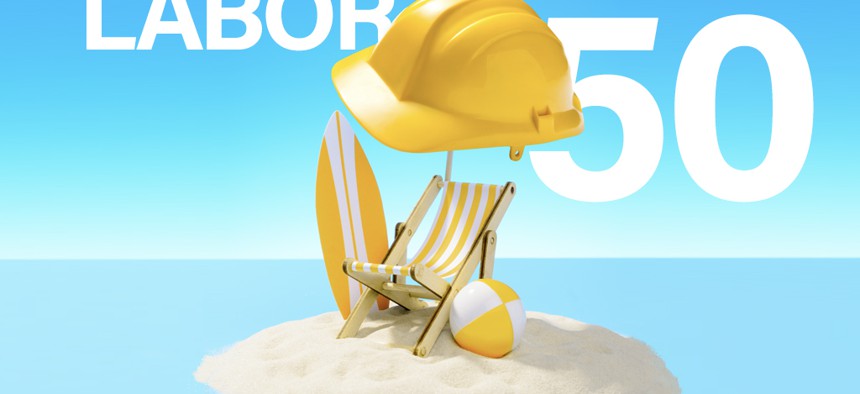Organized labor is facing an array of attacks. The U.S. Supreme Court’s Janus ruling is threatening public sector unions. The building trades are struggling to keep major real estate developers from opting to go open shop. And conservatives and business interests are continuing to take aim at unions, hoping to weaken them both politically and financially.
But in New York, the labor movement has mostly weathered the attacks. Elected officials from both parties are quick to rally behind labor, and the rate of union membership is higher than anywhere else in the country.
Behind it all is a roster of influential figures keeping the movement strong while adapting it for today’s era.
In this special issue of City & State, we recognize 50 top labor leaders who are key players in the world of New York politics and government. Since we cover politicians on a day-to-day basis, we limited this list to those who are not strictly in government but instead influence it from the outside.
We reached out to insiders and experts to compile this list of labor leaders, ranking each person based on their accomplishments, their sway in political and policy matters, their ties to powerful politicians and their ability to deliver for the workers they represent.
As New York celebrates Labor Day, we’re pleased to present the Labor Power 50.
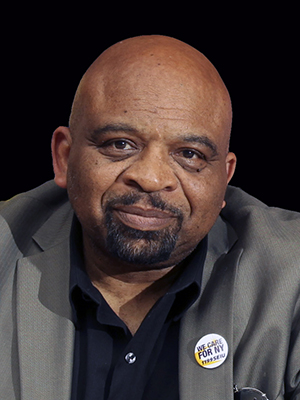
President, 1199SEIU
With George Gresham at its helm, 1199SEIU has been a singular force in New York politics over the past decade. It was the first major union to back Bill de Blasio’s 2013 mayoral campaign, and Gov. Andrew Cuomo, a close Gresham ally, also credited the union’s support in his first electoral win. As the Service Employees International Union’s largest local, 1199SEIU’s ground game during campaigns is unrivaled. The union’s strength, however, derives not just from its numbers, but from its ability to pour money into elections and lobbying. 1199SEIU has continued to gain power as the health care sector grows in economic importance.
Gresham is a strong enough negotiator to hold the line on certain demands – opposing hospital closures, for instance – but has shown the flexibility needed to make deals in other areas, such as trimming Medicaid costs. Working in tandem with the powerful hospital lobby, he has been very effective at channeling public dollars into the health care system. Beyond issues directly related to health care, Gresham has advocated for – and, in some cases, helped underwrite – progressive causes, such as the Fight for $15.
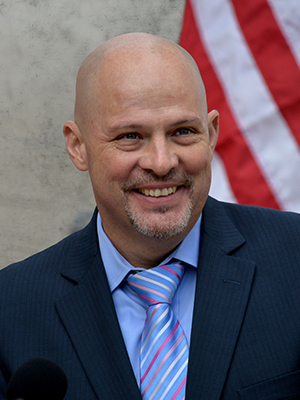
President, United Federation of Teachers
Michael Mulgrew’s members account for nearly one-third of New York City’s 325,000 employees, and constitute the largest single voting bloc in mayoral elections. In 2013, he threw his support behind Democratic runner-up Bill Thompson, but bargaining with Mayor Bill de Blasio’s administration in 2014, the UFT president was nonetheless able to secure a nine-year deal, which included an 18 percent wage hike. The deal set the table for the other 150 municipal unions – all of whom, like the teachers, were working under expired contracts. Mulgrew also has locked down the administration’s support in limiting the expansion of charter schools and eliminating test scores from the state’s teacher evaluation system.
In June, Mulgrew scored another major victory, reaching an agreement with the city on providing paid parental leave for public school teachers. The deal came after months of pressure, at a time when UFT – the largest local union in the country – was seeking to demonstrate its value to members in anticipation of the U.S. Supreme Court’s Janus ruling. Though he represents primarily New York City teachers, Mulgrew is also a close ally of Gov. Andrew Cuomo.
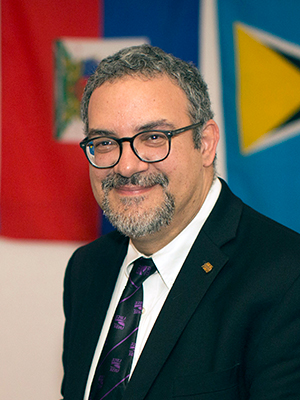
President, 32BJ SEIU
New York is a bastion of progressive politics and a stronghold of the labor movement, and perhaps no individual better embodies the symbiotic intersection of the two than Héctor Figueroa. The labor movement has its progressive faces – leaders who pitch in on fights that don’t have a direct bearing on their members – but fewer who can convert action into results.
Figueroa – who represents 85,000 property service workers in the five boroughs – was a force behind the for-hire vehicle cap, widely applauded by critics of Uber’s labor practices. Figueroa has also been in the mix on other progressive causes, including the Fight for $15 and last year’s worker scheduling law. A critic of President Donald Trump on immigration and a champion of the hurricane recovery in Puerto Rico, Figueroa has also delivered for his workers – including a phased in $19 minimum wage for Port Authority airport employees. The de Blasio confidant has representation on the City Council’s Charter Revision Commission as well as the mayor’s. His actions, as well as his words, speak to a genuine belief in the aphorism: “A rising tide lifts all boats.”
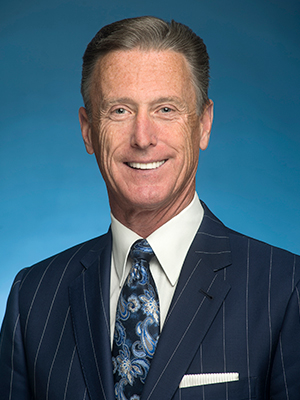
President, New York Hotel and Motel Trades Council
When Peter Ward took over the New York Hotel and Motel Trades Council in 1996, it was at best a peripheral player, a far cry from the political powerhouse of today. Compared to other heavy hitters on this list, Ward’s membership is small – around 35,000 nonmanagerial hotel workers. But thanks to his strong bargaining, they enjoy high wages and excellent benefits, including free access to their own health centers, which serve as a new model for health care delivery that has already been emulated.
Since Ward has his members’ backs, they have his – and the same is true of his relationships with some of the most powerful elected officials in the state, including Corey Johnson, whom he recently helped become New York City Council speaker. His tight relationship with New York City Mayor Bill de Blasio has not compromised his ties to Gov. Andrew Cuomo, who appointed him to the MTA board. It all adds up to an impressive string of legislative victories – including restrictions on Airbnb rentals and a moratorium on hotel conversions – and one inescapable conclusion: Peter Ward is a unique New York power broker.
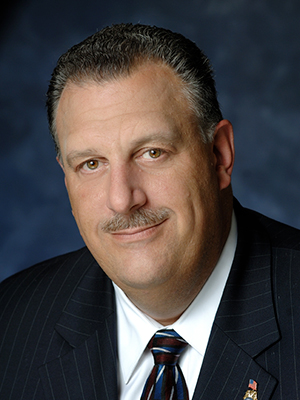
President, Building and Construction Trades Council of Greater New York
In recent months, the Hudson Yards construction site has become a battlefield in a colossal labor dispute. The conflict erupted during the second phase of the $25 billion megaproject when Related Cos. began hiring nonunion workers. Lawsuits were filed, and picket lines formed, at a time when union hardhats were already losing market share, mostly on smaller residential projects.
Gary LaBarbera, the figure at the center of the dispute, says union labor is superior in quality and safety; developers say the cost can be prohibitive. Prior to Hudson Yards, LaBarbera was coming off wins with the prevailing wage requirement in the 421-a tax abatement and last year’s construction safety bill. Since then, The New York Times published a report attributing MTA cost overruns in part to bloated labor deals and, in August, the carpenter’s union went around LaBarbera to cut a deal with Related.
Historically, construction has been one of the most unionized sectors of the economy. Even as it has lost ground in residential construction, union labor has remained dominant on infrastructure and large commercial projects, which is why all eyes are now on Hudson Yards.
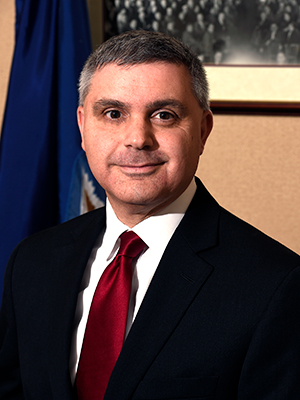
President, New York State AFL-CIO
It was only April, with the U.S. Supreme Court’s Janus decision months away, but Gov. Andrew Cuomo wasted no time in signing pre-emptive measures to mitigate the ruling’s potential impact, including that only union members paying dues would be entitled to union representation in grievance and arbitration cases. On June 27, the day of the court’s ruling, Cuomo signed an executive order aimed at blocking anti-union groups from obtaining government employees’ personal information.
Clearly, then, Mario Cilento had the governor’s ear. All state legislative endorsements go through the 2.5 million-member state AFL-CIO, and Cilento has leveraged his Albany relationships to help pass a host of pro-worker bills in recent years.
Last year, 75,000 new workers joined unions in New York, which is already the most unionized state in the country at 20 percent, double the nationwide average. It’s impossible to credit Cilento with the overall vitality of the movement, as he depends on the backing of powerful unions. But given national trends and the external threats that organized labor faces, it wouldn’t do to have a weak figure in his role – and Cilento is anything but.
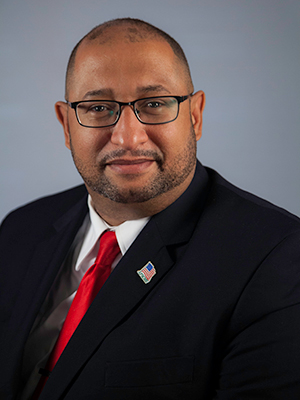
Executive Director, District Council 37
On June 26, District Council 37, which represents approximately one-third of New York City’s workforce, became the first municipal union to come to terms on a new contract in the current round of bargaining. The contract was notable in that it could set the baseline for the rest of the city workforce.
DC 37 Executive Director Henry Garrido’s deal – which came one day before the U.S. Supreme Court’s Janus ruling – included an agreement from the city to report to the union new hires as well as workers transferred into its bargaining unit. In his more than three years leading the union, Garrido has made enrolling those who pay agency fees a priority. Under the current voting system, several hundred delegates, rather than the local rank and file, elect officers to the umbrella group.
Under Garrido, another DC 37 priority has been reversing the Bloomberg era trend toward outsourcing. The executive director has acknowledged in the past that the union’s ground game, and ability to impact elections, is not what it once was. Though he is not in the inner circle, Garrido has certainly got the mayor’s ear.
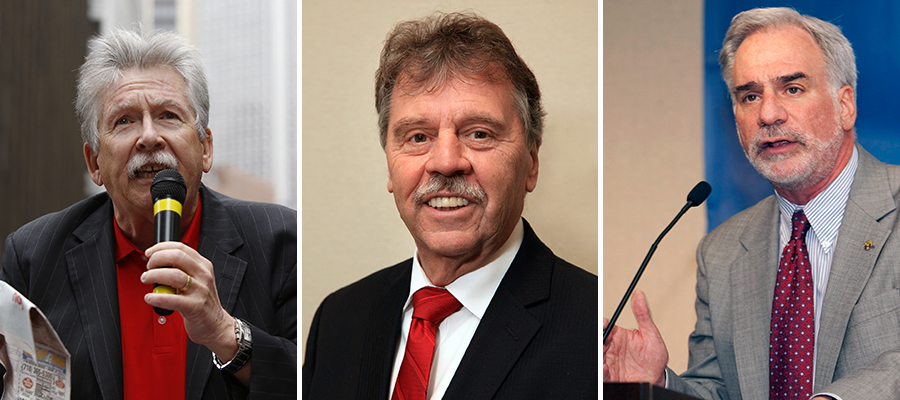
8. Chris Shelton, Dennis Trainor & Bob Master
President; Vice President, District 1; Assistant to the Vice President, District 1, Communications Workers of America
When Chris Shelton took over as international president of the 700,000-member Communication Workers of America, Dennis Trainor, his top aide, replaced him as vice president of District 1, which covers New York, New Jersey and New England. At District 1, Trainor is flanked by Assistant to the Vice President Bob Master, a central figure in the founding of the New York state Working Families Party and the party’s co-chairman for many years.
District 1 is made up of more than 300 locals, which represent some 160,000 workers, including a wide range of municipal employees, legacy phone workers at Verizon Communications Inc., wireless workers at AT&T Inc., flight attendants, nurses and printers.
Though based in Washington, D.C., since 2015, Shelton is a Bronx guy at heart. Over the years he, along with Trainor and Master, has shown the trio can move legislation as well as mobilize their members, most notably in 2016 when they led a 45-day strike of 40,000 Verizon workers. Pillars of the local labor movement, this trio is close to the governor, and inner confidants of New York City Mayor Bill de Blasio.

President, Uniformed Sanitationmen’s Association, Teamsters Local 831
Harry Nespoli may not lead a large union, but he is one of New York City’s most influential labor leaders and his decisions directly impact the wages and benefits of the city’s 325,000 workers. That’s because he succeeded Randi Weingarten as chairman of the Municipal Labor Committee – an umbrella group of public sector unions that oversees health care – and he came up big when Mayor Bill de Blasio entered office with every municipal union contract expired. Former Mayor Michael Bloomberg, in his final budget, had left no labor reserve, which meant any pay raises would have to be offset in other areas.
The MLC was ultimately able to produce $3.4 billion in health care savings without raising costs for workers. Prior to the recent District Council 37 deal, which may set the pattern for the current round of bargaining, the MLC came up with another $1.5 billion in savings. As president of the Uniformed Sanitationmen’s Association, Teamsters Local 831, Nespoli has also advocated on behalf of his female members by ensuring that sanitation facilities accommodate their needs, and he worked with the city on more sustainable waste management practices.

Executive Director, New York State Nurses Association
In her more than five years leading the New York State Nurses Association, Jill Furillo has added some serious heft to the union’s political action arm. While much of her energy has been focused on persuading Albany to legislate higher nurse to patient staffing ratios and fighting against hospital closures, Furillo has established herself as an authentic progressive voice on a number of issues, including universal health care, capitalizing on the leftward swing in the political pendulum to bolster her union’s profile.
While Bill de Blasio was the first mayoral candidate NYSNA ever endorsed, Furillo has developed an alliance with Gov. Andrew Cuomo, helping to cover his left flank in the current election cycle. NYSNA officially endorsed the governor’s re-election bid in May, and six weeks later he pledged his support for nurse staffing minimums – which the powerful hospital lobby opposes – a couple days after the state Legislature adjourned without taking action. California is the only state in the country thus far to enact a minimum nurse to patient staffing law. Furillo, then government relations director of the California Nurses Association, was the driving force behind the bill’s passage.
NEXT STORY: Albany 40 Under 40 alumni

